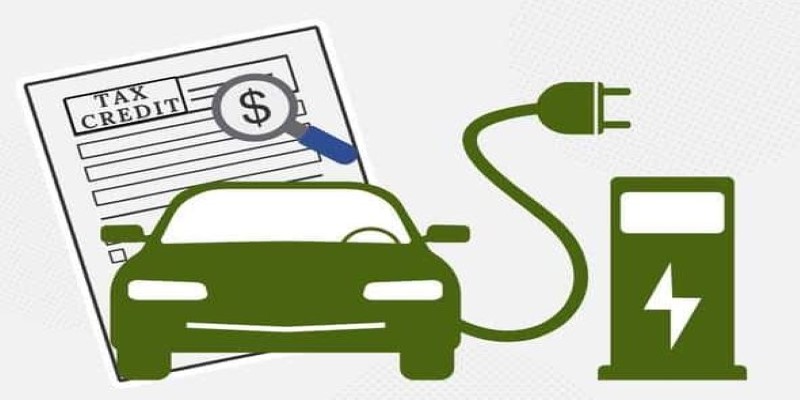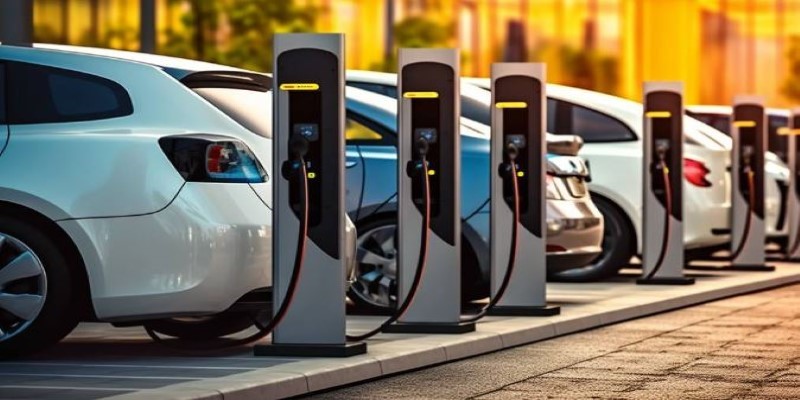Your Guide to Electric Vehicle Tax Credits in 2024: What’s Changed
Dec 13, 2024 By Triston Martin
Electric vehicles (EVs) are no longer just a trendy choice for the environmentally conscious; they're now mainstream. With advancements in battery technology, improved charging infrastructure, and increased range, more people than ever are considering switching to an EV.

In 2024, the U.S. government will roll out new and refined tax credits to make EVs more affordable. But what exactly has changed? If you're planning to buy an electric vehicle or wondering about the tax benefits, here's what you need to know to make the most of the new 2024 electric vehicle tax credits.
What's Changed for Electric Vehicle Tax Credits in 2024?
Electric vehicles, once niches, are now mainstream. New government policies and incentives are beginning to make environmentally friendly transportation more mainstream. With this year closing out in 2024, revised federal EV tax credits open up new possibilities, boosting access and affordability for a wider variety of EV owners. Here's a sneak peek at what's new and how these changes make owning EVs more accessible than ever.
A Fresh Take on Tax Credits: What Qualifies in 2024?
Starting in 2024, the U.S. government split the EV tax credits as it revised them between new and used vehicles and imposed different requirements for each of them. Qualification for a new EV buyer comes as high as $7,500 in credit, and that amount is based on battery production standards and final assembly in the U.S.

Used EV buyers can receive a maximum of $4,000, but eligibility requires the vehicle to be at least two years old and not exceed a set price limit. This makes the credit accessible to a broad spectrum of buyers. These updates aim to support both cutting-edge and budget-conscious EV adopters.
Income Limits and Eligibility: Who Can Benefit?
The 2024 tax credit program introduces income thresholds to focus benefits on middle- and lower-income buyers, ensuring broader accessibility. Individuals must earn $150,000 or less, joint filers are capped at $300,000, and heads of household have a $225,000 limit. These caps prevent high-income buyers from receiving the tax credit, directing it instead toward families and individuals who may find EVs financially challenging.
This income-focused approach aligns with the governments push for equitable access to eco-friendly transportation, emphasizing that sustainable vehicle ownership is not only a luxury for the wealthy but a viable option for everyone.
New Battery and Manufacturing Requirements: Keeping Production Close to Home
In 2024, specific EV eligibility criteria mandate that a portion of battery components come from the U.S. or its trade partners. This change encourages manufacturers to source critical minerals domestically or from allied nations, supporting the U.S. economy while reducing dependency on foreign resources. Vehicles that meet these standards can qualify for the full $7,500 tax credit.
Critical minerals and battery components must be sourced or manufactured within North America to qualify, promoting domestic job creation and sustainable EV production. These requirements aim to foster a robust, homegrown supply chain for electric vehicles and their essential components.
EV Leasing: An Unexpected Boost for Renters and Leasing Customers
New in 2024, leasing EVs now comes with tax credit advantages. Leasing companies can claim the tax credit and pass the savings to consumers, translating into lower monthly lease payments. This incentive is particularly valuable for those preferring short-term commitments over outright vehicle ownership. As a result, EV leasing has become a cost-effective, flexible way to experience electric driving.
This move supports the governments goal of increasing EV adoption across diverse income brackets and driving habits. For those unsure about a long-term commitment to EVs, leasing in 2024 provides an appealing, affordable gateway to the electric experience.
EV Infrastructure and State-Level Incentives: A Broader Push for Adoption
Federal tax credits are only part of the 2024 EV incentives. Many states offer rebates, tax exemptions, or even carpool access to EV owners. California, for example, provides additional rebates and allows EV drivers to carpool privileges, while states like Colorado and New Jersey offer significant state-level tax credits.

Federal investment in charging infrastructure nationwide further boosts EV appeal, adding more stations along highways and in urban areas. Combined, these initiatives reduce range anxiety and enhance EV convenience, encouraging Americans across diverse regions and driving needs to consider an electric vehicle for their next car purchase.
How to Claim the 2024 EV Tax Credit: Key Steps for Buyers
Claiming the EV tax credit is designed to be straightforward, but there are a few steps to keep in mind. If you're buying a new or used EV, ensure you meet all eligibility criteria, including income and vehicle requirements. Most importantly, confirm that the dealer you purchase from has a clear understanding of how the tax credit works, as they can often help you navigate the paperwork.
For new EV purchases, the credit can be applied directly to your federal taxes during tax filing, effectively reducing the amount of tax you owe. If you lease an EV, work with your leasing company to understand how the tax credit impacts your monthly payments. The leasing company typically claims the credit and then passes the benefit on to you, so ask how they handle this to make sure you receive the intended savings.
Conclusion
The electric vehicle tax credits in 2024 reflect a focused effort by the government to make sustainable transportation affordable and accessible to a wider audience. From expanded eligibility for used EVs to new incentives for leased vehicles and manufacturing requirements aimed at boosting U.S. production, this year's updates offer something for nearly everyone considering an electric vehicle. As the world increasingly shifts towards cleaner energy, 2024 is a pivotal year for those on the edge of embracing EVs. With government support making these vehicles more affordable, now might be the perfect time to transition to electric, reducing both your carbon footprint and long-term transportation costs.








